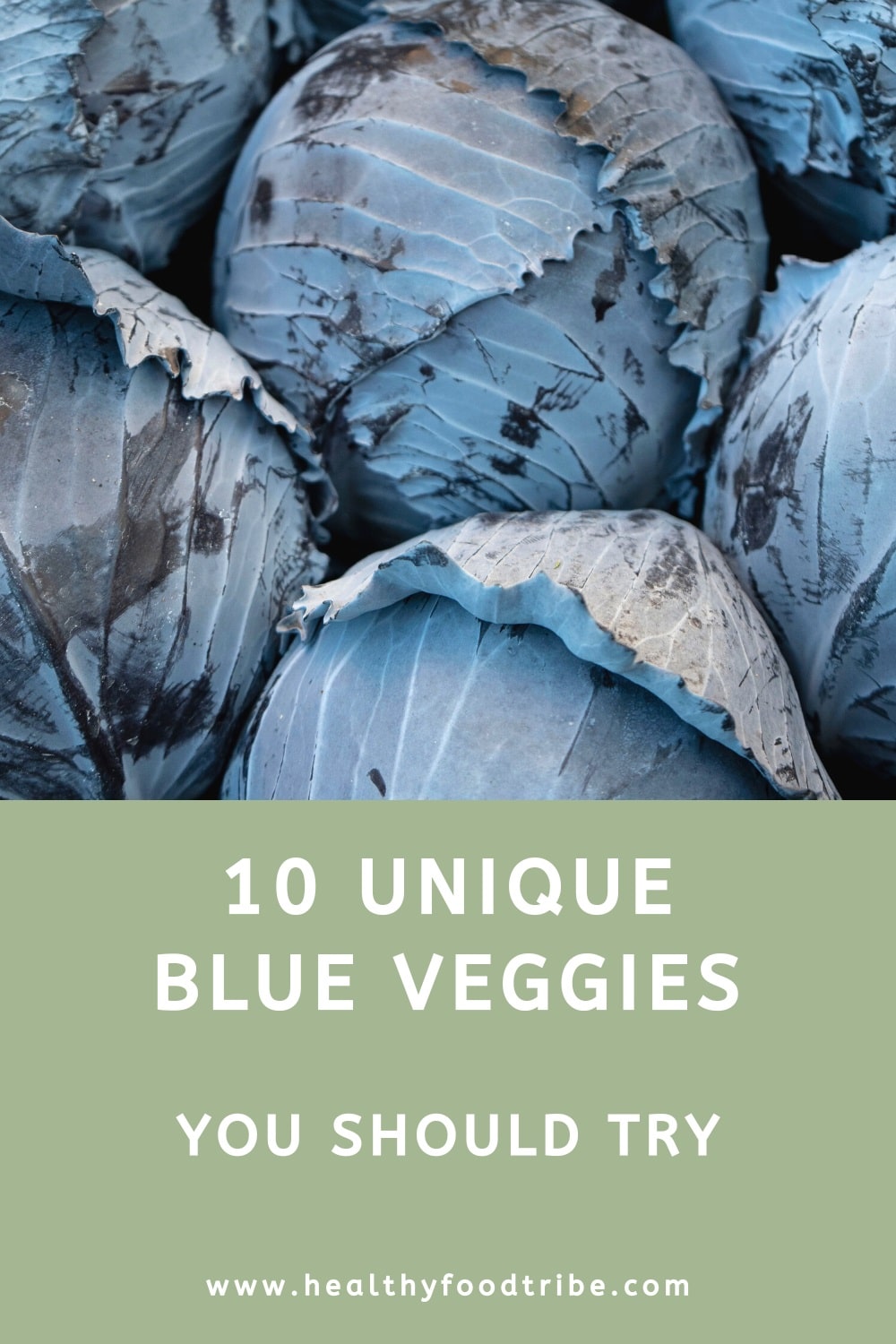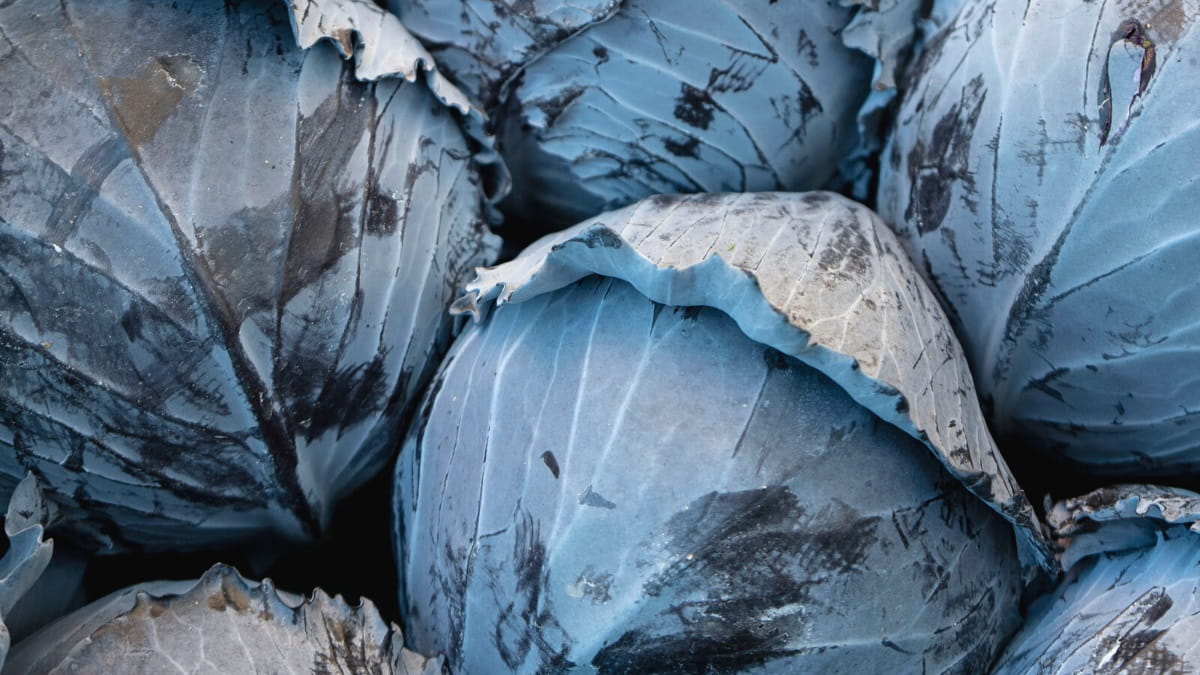Last updated: November 27, 2023
This guide explores the world of rare blue vegetables. Discover ten unique blue-colored veggies, each with its own flavor, nutritional profile, history, and culinary application. Get ready to add a splash of color and intrigue to your dishes.
Blue vegetables are a rarity. That fact is thanks to the relative instability of blue anthocyanins, the pigment chemical that gives red, purple, and blue plants their color.
These specialty pigments only turn blue and stay blue when the pH inside the plant is just right. Every once in a while, the right factors come together, and a blue vegetable is created.
In this article, I will share ten of the bluest vegetables that are worth trying!
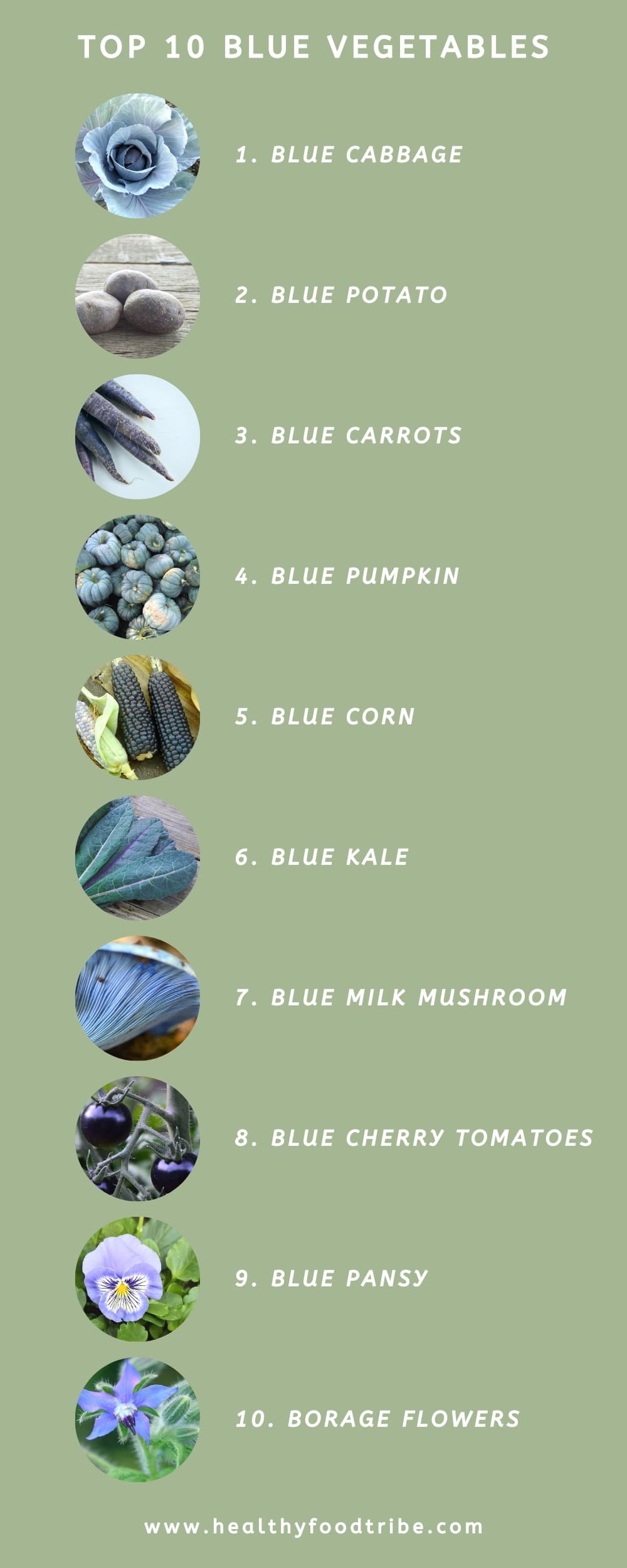
Top 10 Blue Veggies
Prepare to be surprised and inspired by the world’s most captivating blue vegetables.
1. Blue Cabbage
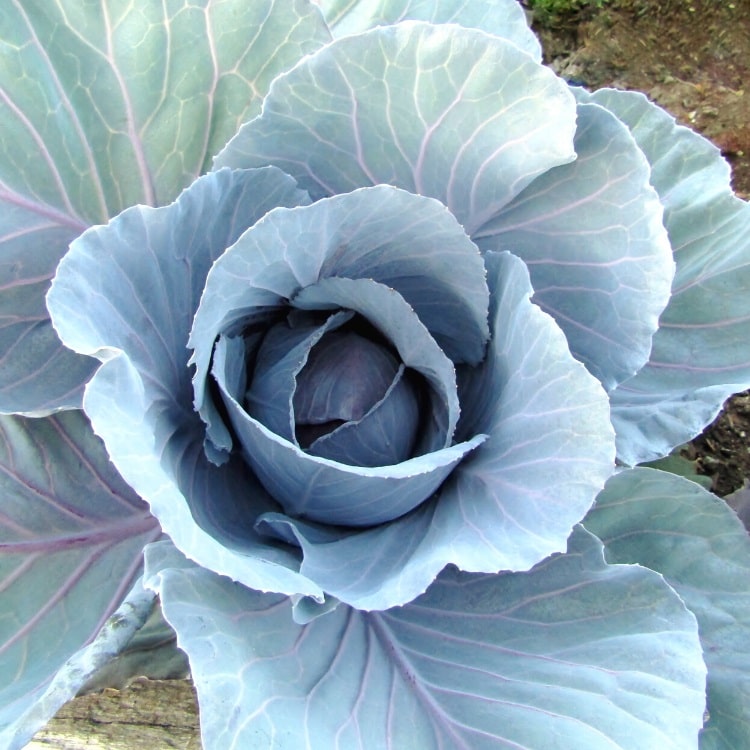
Blue cabbage, which should not be confused with the more common red or purple cabbage varieties, has a unique greenish-blue hue.
This coloration is especially prominent in the outer leaves, while the younger center leaves show more green.
The most common blue-colored cultivars of cabbage are Blue Vantage and Blue Lagoon. Both feature thick, crunchy leaves that are perfect for creating a festive coleslaw mix or eating raw.
Purple vegetables from around the world.
2. Blue Potato
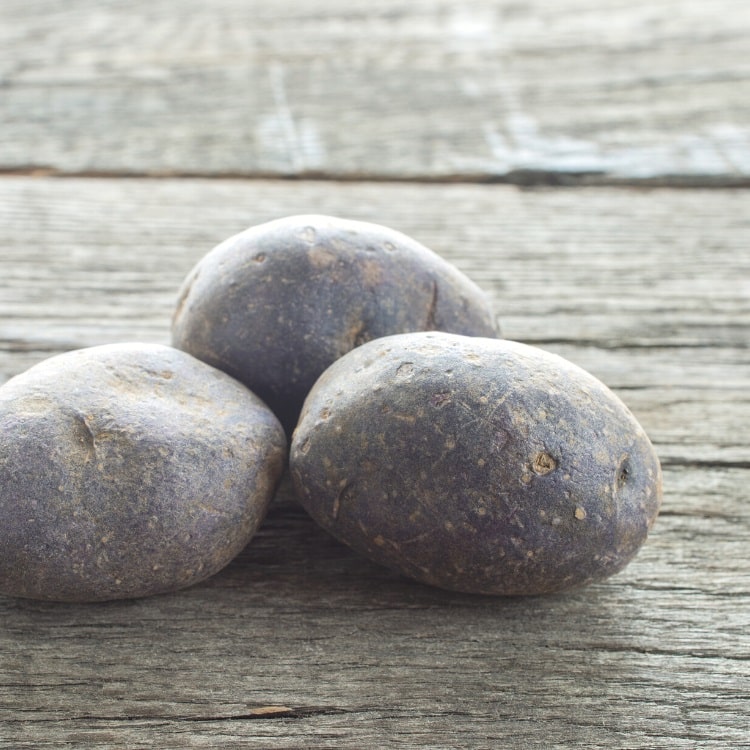
All potatoes are native to the Americas, but darkly pigmented red, purple, and blue potatoes were originally only found in South America.
Where more popular potatoes lack pigmentation, the blue cultivars have an excess of anthocyanins. And a handful of these features are just the right chemical composition and pH to express deep blue coloration.
The bluest potato cultivars include Adirondack Blue, Magic Molly, All Blue, and Blue Tomcat. The skin and flesh of each can vary from dark purple to deep purple-blue, depending on the acidity of the soil. Either way, they make a gorgeous addition to any potato salad.
3. Blue Carrots
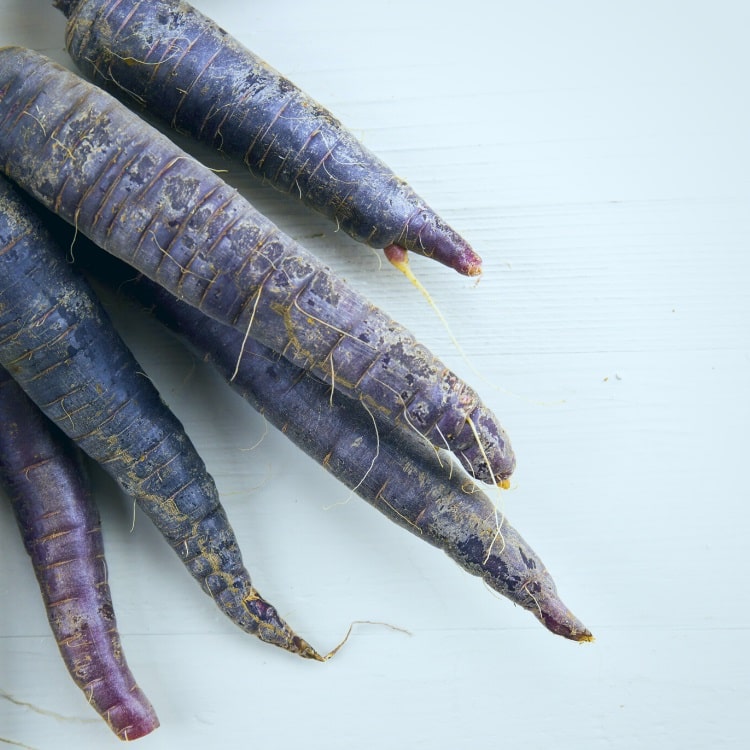
Back in the days before industrialized agriculture, blue and purple carrots were far more common than orange. In fact, these colorful heirloom cultivars were crossed with yellow varieties to create the popular beta-carotene-rich carrots we eat most often today. But blue carrots still have a lot to offer, including plenty of antioxidants.
Most “blue” carrots have dark skin that is either blackish blue or purplish blue. The inside flesh tends to sway more into the purple realm. Some can even have yellow, white, or orange pigmentation mixed with purple.
They taste just as good (if not better) than orange carrots and are a great way to add color to any carrot-heavy dish. I especially love to prepare them by slicing them to reveal all the fun pigment patterns inside.
Black vegetables from around the world.
4. Blue Pumpkin
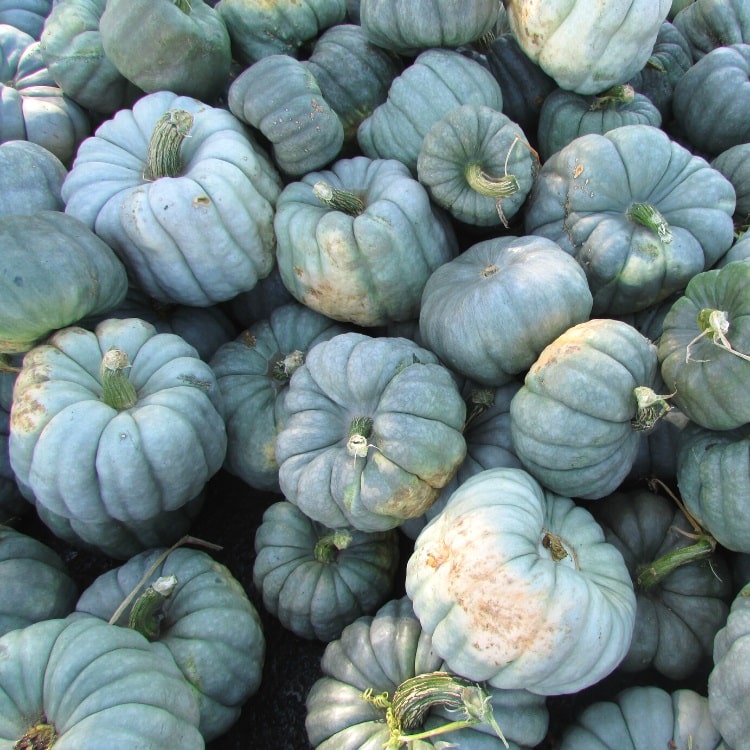
Blue pumpkins are a rare but beautiful find. These pale-skinned squashes have a traditional pumpkin shape with exaggerated concave curves around the stem and blossom end. The skin ranges from gray to light blue and bluish-green.
They are native to the Americas and were cultivated through selective crossings and hybridization. The flesh of all blue pumpkin cultivars is orange and has a similar flavor to traditional pumpkin varieties.
In cooking, they can be used in much the same way as a pie pumpkin, but are much more often used for seasonal displays.
5. Blue Corn
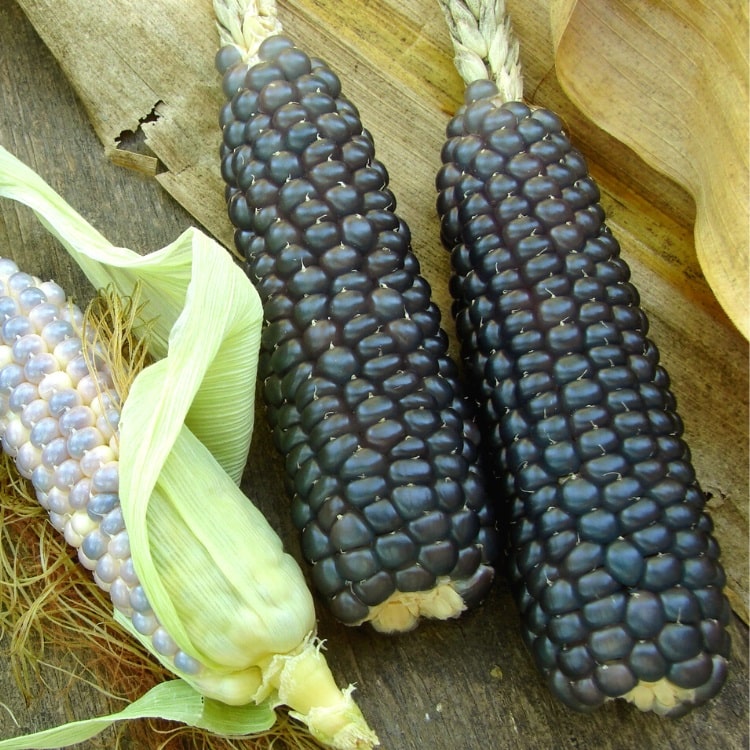
Blue corn is a type of flint corn that features a hard outer layer over each kernel and a unique blue coloration.
All ancient cultivars were originally propagated by the Hopi Native Americans as well as other tribes in the American Southwest.
Today, this beautifully colored corn is used to create blue corn chips, tortillas, and corn flour, and is also popular as a dried decorative corn.
Weird vegetables from around the world.
6. Blue Kale
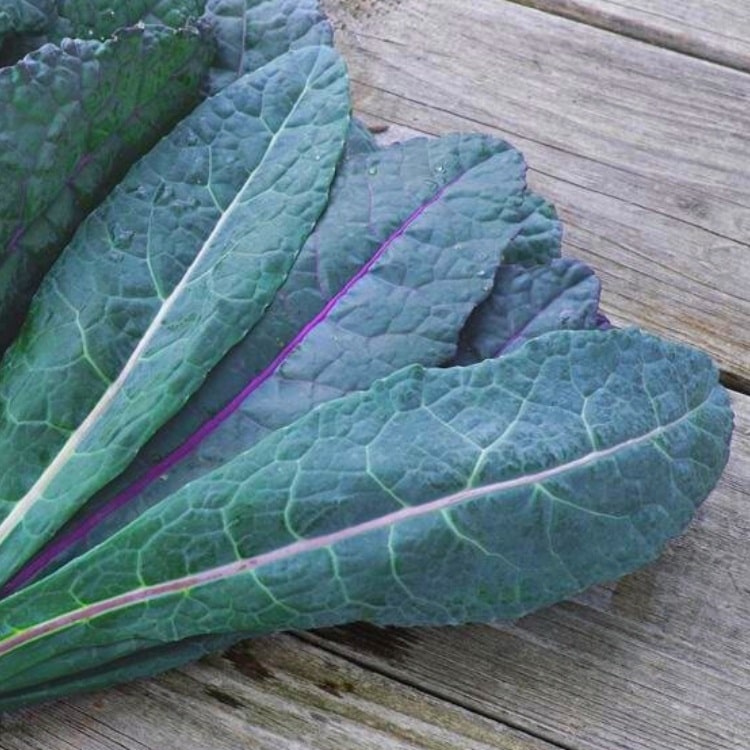
Kale comes in a variety of colors, from bright green to pinkish purple. And somewhere in the middle are the blue tones I love.
Scotch Blue, Dazzling Blue, and Vates Blue Curled Scotch are some of the most common cultivars. All have bluish-green leaves with pale green or purple ribs.
Like other types of kale, these varieties make a great addition to salads. They can also be steamed or sauteed, though much of that pretty blue color will fade with these preparations.
7. Blue Milk Mushroom
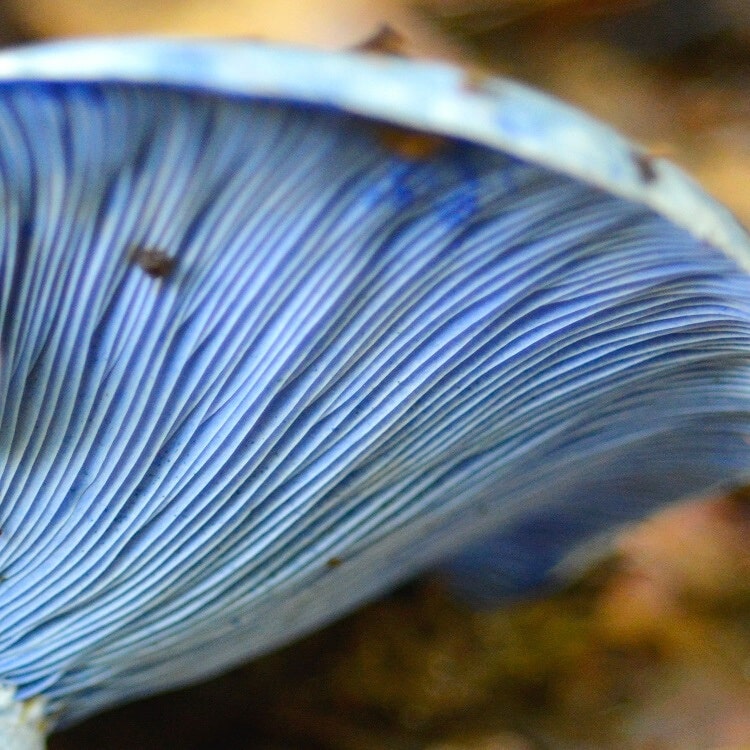
Also known as indigo milkcap, the blue milk mushroom is a bright blue mushroom that grows naturally in North America, Central America, and East Asia.
The indigo coloring of these mushrooms fades to pale blue-gray as they dry. The blue color cooks away with heat, but the deep indigo latex sap can be used to add natural blue pigment to sauces.
Blue milk mushrooms are safe to eat and are common in many Central American and Asian dishes.
8. Blue Cherry Tomatoes
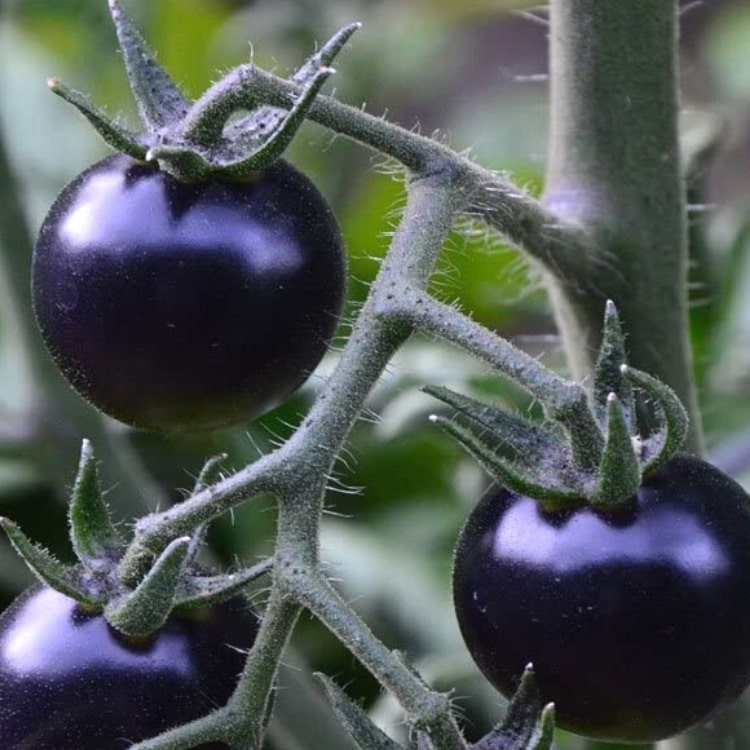
There are several “blue” tomato cultivars out there, including Blue Beauty, Blue Cream, and Indigo Chocolate. But most of these are more purple than blue.
The one cultivar that can take on a truly blue look are blue cherry tomatoes, also known as Fahrenheit Blue tomatoes.
This cherry tomato cultivar darkens from red to nearly black. But in the sunlight, there is a distinct blue tone to that darkness that other varieties lack. They have a complex aroma and intense flavor to match their physique.
9. Blue Pansy
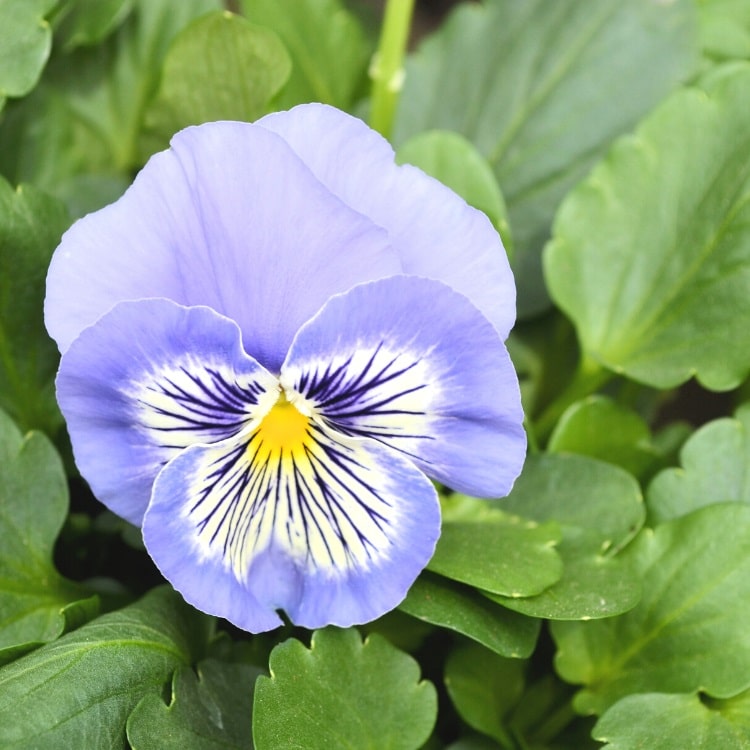
Pansy flowers are a favorite ever-blooming flower for pots and gardens, but these delicate blooms also have a place at the dinner table.
Pansies are edible and have a pleasingly mild baby lettuce flavor with hints of wintergreen and bubblegum, depending on the variety. Blue pansies are among the most beautiful pansy types to include on your plate.
The blue varieties come in a wealth of shades, from dark indigo to pale periwinkle. Any one of them would make a beautiful addition to your raw salad or a great candied topping for your cake.
10. Borage Flowers
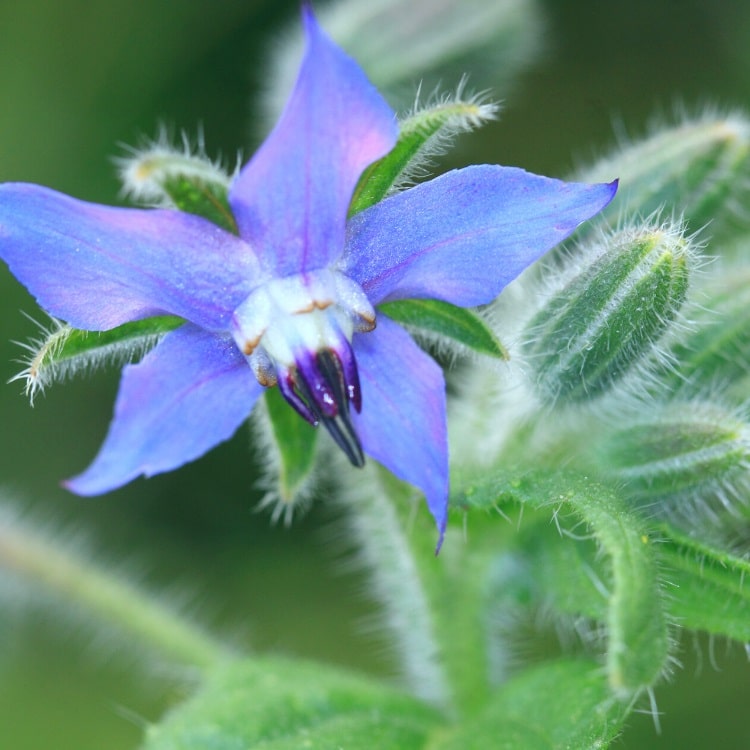
Borage flowers are one of the few true blue flowers found in nature. They have a light, sky-blue coloration, and a fun star shape. This herb is native to the Mediterranean but now grows naturally throughout Europe.
These delicate little flowers are used predominantly to add a festive flair to salads or other veggie dishes. But they contain a surprising amount of flavor that can elevate dishes beyond appearance.
Borage flowers have a honey-sweet flavor with a salty aftertaste and make a great addition to savory and sweet dishes. The flowers, stems, and leaves of borage are all edible.
